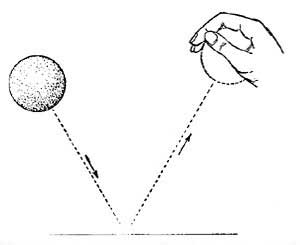NRC, weighted alpha value, sound absorption class, what does it really mean? pt 1
Acoustical ceilings are very often accompanied by mystic terms and expressions but what is really the practical use of all these expressions and how do i know how it will affect my sound environment. Let’s see if we can make some sense out of all this and let’s start with the expression sound absorption:
Sound is energy causing variations in air pressure that is moving around with logically enough the “speed of sound”. What makes us hear these sounds are that we have a thin membrane of skin in our ears that will vibrate along with the differences in air pressure and by reading these vibrations of the skin membrane our brain will translate that into the correspondent sound.
Any surface can get exposed to these variations in air pressure and depending on the composition of the surface, thin, thick, hard, soft, rigid, porous it will react in different ways. If we want to simplify this a bit by only focusing on how much of the energy that the surface can absorb. All the energy that can’t be absorbed will be reflected back in the room again, in another direction until it hits something else.
The easiest way of understanding this is to take an ordinary tennis ball and through it agains a wall, floor or ceiling in a room.
You will then experience how it will bounce to hard surfaces and move on in another direction and how the bounce will die as soon as it hits something soft like a thick rug, curtains or a soft pillow.
The tennis ball can also illustrate the differences in sound absorption on high and low frequencies. Imagine the tennis ball thrown at a heavy curtain. If the balls is thrown with high speed, to illustrate high frequency sound, it will fall dead when the energy is absorbed by the curtain, but if you throw the ball try gently to the curtain, to illustrate a low frequency, the curtain will start to swing back and forth by the energy given by the ball. The energy isn’t absorbed, it is just transported into another media. If the curtain should be able to absorb the gently thrown ball it would need the assistance of for example someone’s hand on its back side to support where the ball hits.
You can now understand that a material that is very good at absorbing high frequencies isn’t automatically a good low frequency absorber and sometimes also the opposite. Choosing products for sound absorption is therefore very often a kind of compromise. It is generally speaking always easier to absorb high frequencies compared to low frequencies, so most rooms are over dimensioned when it comes to absorbing high frequencies to be able to meet up to the requirements on the low frequency absorption.
Materials that absorbs high frequencies are normally porous where the pores can”suck in” the sound energy and the endless walls of these pores will take the energy out the it.
Materials that can absorb low frequencies are often two combined materials with different characteristics working together like for example a heavy curtain and a cavity behind it before there is a wall.
The next posts will handle NRC and weighted alpha coefficients and with the knowledge above you will soon understand the limitations of these when it comes to dimensioning your room acoustics.
Why is is so important to absorb sound to get good room acoustics?
Look at this picture and look out for the post about reverberation time.



[…] In the previous post we tried to explain Sound absorption. If you missed it, catch up here. […]
[…] In the previous post we tried to explain Sound absorption. If you missed it, catch up here. […]